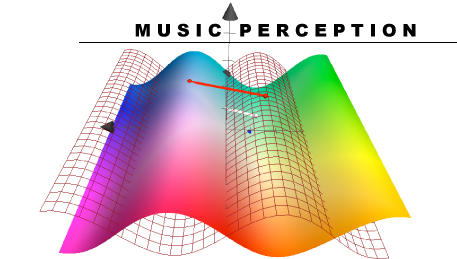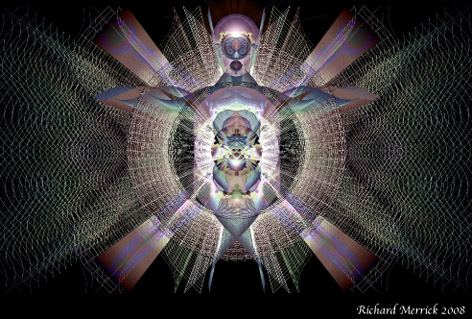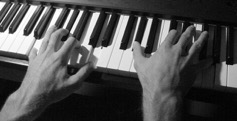Music Perception
22/04/10 09:05

Some songs you like, others not so much. Take for instance those "silly" songs your parents listen to or that "weird" music of distant cultures. What could your favorite music have in common with any of that? Just ask anyone and they will tell you the same - music is a personal choice no different than fashion, influenced only by the prevailing culture of our youth.
Psychologists mostly agree with this idea, suggesting that music is learned like a language and scales are just a convention, memorized like a "pitch alphabet." Musicologists also support the idea, pointing to the long development of music throughout history, evolving haphazardly into many of the conventions now taught in our universities. Ethnomusicologists are even more convinced of the primary role of cultural influence, citing how only Western music developed into vertical harmonies.
With such an overwhelming consensus, it seems a fait accompli that music is simply a matter of opinion. Few would suggest that any kind of universal musical preferences are built into our ears or brain.
But what if there really is some kind of universal cognitive structure that predisposes us toward certain things in music?
What if there is a perfectly natural explanation for music harmony - one that is altogether consistent and based on the harmonic laws found everywhere in nature? What if there is a single root cause behind musical concepts like keys and tonality, major-minor, dominant-subdominant, the omnipresent Cycle of 5ths and even the enigmatic tritone interval? What if a unified theory of music harmony does exist to explain our perception of intervals, scales and chords while also providing a far better framework for music education, performance and composition?
The fact is there is a profound reality to be discovered in music. When I began my research to try and get to the bottom of this, it was clear I would need to tie common musical practice to the physics of sound, support it with respected studies from experimental psychology and define it rigorously with mathematics. But little did I know I would be taken so far afield to look for clues in plasma waves, quantum mechanics and chemistry, laser holography and brain theory, the auditory cortex of cats and monkeys, quasi-periodic models of the genetic code, Earth plate tectonics and the history of medieval education. Even more remote in my mind was the possibility that musical terms could accurately describe the physics of life and the cosmos - just as it did for the Greeks and the Egyptians before them. I quickly learned that the study of music harmony is the study of everything.
These words sit precariously between the world of Science and the world of Art, a most fascinating and dangerous place to be. Historically, this has been a no man’s land of religion, alchemy and astrology, ending in the still unreconciled divorce of music and science in the first part of the 17th century. The exclusion of music from the umbrella of science was the work of none other than the “father of science” Galileo Galilei.
In an age when music and harmonic theory was strictly controlled by Church law, Galileo's inner conflict of faith together with his fear of the Inquisition gave us the unguided study of nature we now know as the scientific method. With the old world view of musica universalis soon shoved aside by Newton and Descartes, everything became nothing more than quirky machinations of discrete parts. In an Age of Reason, anything associated with music was viewed as a Church tradition while the study of harmonics was left behind as metaphysical roadkill on the road to The Enlightenment.
Three hundred and fifty years later, Science now finds itself looking for a way forward in a neo-magical world where “spooky action at a distance” and the “Heisenberg Uncertainty Principle” have become cornerstones of quantum physics. In this fuzzy worldview of probability clouds and wave-particle duality, the observer has reentered the picture as an unwilling participant in his own experiment. Physicist Werner Karl Heisenberg said, “What we observe is not nature itself, but nature exposed to our method of questioning.” Given this, how are we to measure our perception of nature?
It is at this point that the science of music makes its prodigal return like Alice’s rabbit to show us the way. Entangled between observer and the observed, our perception of sound suffers from the same paradoxes facing quantum physics. It sits at the very border between our environment and our biology, inextricably bound – yet, a most accessible laboratory. Hardwired into the way we perceive and understand the world, it can open a doorway into nature if only we step in. Solving the paradoxes in music might just help solve those of our invisible quantum reality.
Chasing the rabbit down the hole we find an “inmost chamber” of harmonic science - a place where ancient knowledge and the latest scientific discoveries can coexist. Far beneath the shiny veneer of personal preference, regional culture, mass market entertainment, industry classifications, lifestyle genres, trendy instrumentation, magnificent orchestration, studio production values, glamorous personalities and judgmental music critics -- we stare wide-eyed at the primal harmonic framework in sound and in ourselves. Dissecting each component, we train our microscopes and telescopes on that one pattern of sound – the harmonic interference pattern – at the center of music cognition.
This is where the natural harmonic waves of multiple tones intersect to form the predictable peaks and valleys we evolved to recognize and anticipate. These are the coherent holographic patterns of overlapping standing waves aligning in perfect spatial symmetry. These are the long familiar Gaussian resonance patterns carved out by whole number harmonic proportions as they push against the anti-harmonic Fibonacci series.
Here is where musical chords and melodies can be found to oscillate around two infinitely calm and non-reflective locations – the golden ratio and its inverse – and where the Fibonacci spirals of our ears work to uncoil the spatial and temporal proportions encoded in harmonic sound. Unfolding from the interference pattern of coherent waves, we recognize the beautiful patterns of DNA, quasi-periodic crystals and Platonic geometry - the patterns of a harmonic standing wave here long before music. Listening to a Bach fugue or Mozart sonata, we can hear these shapes tumble and change colors in our holonomic brain as they trigger the anticipation/ reward potentials of our emotions.
The shape and color of sound is very real, but elusive and ever changing. In pitch space it takes the form of interlocking rings, tangential orbits, orange and yellow triangles, tense quadrilaterals and warped stars extruding into the refractive solids of prisms, tetrahedrons and dodecahedrons. In time it can take the less regular shapes of cardiodal hearts, ellipsoidal eggs and complex topologies. Unraveled in time, these shapes are broadcast to our ears as complex disturbances of air to be disassembled, reconstructed and recognized as the tangible objects they really are. But behind all of these shapes and shadows we find only a single projector – an oscillating standing wave – the same projector of our dreams and our reality.
This journey to a deeper scientific meaning for music has been my personal waking dream for many years. The kind of meaning I always wanted, but never found. A meaning protected from subjective opinion and learned behavior – beyond the dogma of culture and faith. A philosophical meaning that explains our place at the razor’s edge between order and chaos, circle and spiral, the limited and the unlimited. A place where music might become the harmonic science it once was and should become.
Like some inverse reflection by painter Rene Magritte, I am your observer in this dream. I bring a human element to the method of science and a rationale to the aesthetic of art. My words form neither a scientific paper nor a musical treatise. They are inadequate for both, yet perhaps adequate for the space in between. This is the space that interests me and the space that I believe holds the most promise for the future. This is the model of music harmony that turns out to be the model of everything.
Richard Merrick
October 2008



